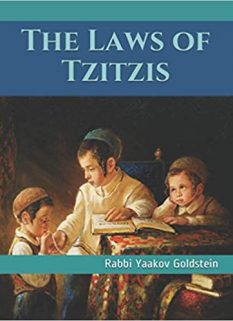*The article below is an excerpt from the above Sefer
*As an Amazon Associate I earn from qualifying purchases.
Chapter 22: The creation of Kelipa and definition of idolatry
1. Why the term speech is used regarding creation:
- The Torah refers to the speech of G-d in the human language in order to describe how He created the world being that in truth in the eyes of man, His speech is exactly similar to the speech of man, being that it goes through various descents and a multitude of powerful contractions of different qualities and quantities in order to create the many creations, each in accordance to their species. [Now, these creations feel themselves as separate entities from G-d, which is similar to the speech of man which is a separate entity from man.]
- Intense concealment and contractions: The intensity of the contractions and concealment of G-d’s countenance are so great that even impure entities and the side of evil were able to be created from the drastically contracted and concealed form of Divine energy. The evil forces receive their energy and existence from the word of G-d and the spirit of His mouth in a completely concealed manner and after downward gradations.
- Being called “Other G-ds”: It is for this reason that the side of evil and its evil forces are referred to as a foreign G-d, this is due to that their nurture of Divine energy is not from the inner countenance of G-d but rather from the external parts of holiness, which are distanced and foreign from G-d’s inner countenance. This is known as the aspect of “Achurayim” and comes from the term “Elokim Acheirim.”
- A “coerced” giving of Divine energy like one who gifts his enemy: The term “Achurayim” hints to the idea that the Divine energy given to the forces of evil, the foreign G-ds, is given to them unwillingly and is coerced to be given simply so they exist. This is similar to one who is coerced to give his enemy a gift against his will, and thus when he does so he throws the gift to the recipient from behind his back, in a way that he does not show his face to the individual, being that he hates him.
- Holiness is G-d’s friend which receives from the inner countenance of G-d: Just as below in this world there exists a friend who one has a desire to give a gift to, and an enemy who one may be coerced to give a gift to, so too it is above in heaven. G-d’s “friend” whom He desires to gift to is the side of holiness. G-d desires to give His Divine energy to all those who are close to the side of holiness, and He gives to them from His inner countenance, from His inner sublime will and true desire.
- The side of evil is G-d’s enemy which receives from G-d’s external light: The side of evil and impurity is an abomination in the eyes of G-d and is hated by Him. Accordingly, G-d does not give it Divine energy from His inner will and with a true desire, in which He actually desires its existence, G-d forbid. Rather he gives it to them unwillingly, like one who throws an item to his enemy from behind his back being that he can’t face to look at him due to his disgust.
- Why then did G-d create evil? Why then did G-d create the side of evil if he hates it so much? This is in order to give punishment to the Reshaim and give good reward to the righteous who subjugate the side of evil and overcome it. This is why its creation is considered to come from the external part of G-d’s supernal will, as He does not truly desire their existence and so to say is coerced to create them in order to create the function that they provide. [Meaning, the side of evil has two functions: 1) To give out punishment which is something that G-d Himself cannot so to say personally do being that He is the ultimate of kindness, although even this creation of evil to give out punishment is in truth a kindness of G-d to help refine the creation and bring them to repentance. 2) To create freedom of choice between good and evil, and hence create the possibility for the righteous to be rewarded.]
Related Articles
Daily Tanya Thursday 7th Tamuz Igeres Hateshuvah Chapter 1 Part 1: The types of sins and their atonements
Post Views: 113 Chapter 1: 7th Tamuz 1. Types of Atonement There are three types of atonement, each corresponding to a category of transgression. Repentance (teshuvah) is required in all cases. 2. Atonement for Positive Commandments If one fails to fulfill a positive commandment and repents, forgiveness is immediate. However,
Daily Tanya Wednesday 6th Tamuz Shaar Hayichud Viemuna Chapter 12 Part 2: The 22 letters of the Hebrew alphabet
Post Views: 134 1. Reflective Nature of Divine Light Just as moonlight is a reflection of sunlight, the substituted letters are a reflection of the divine energy that sustains creation. 2. The Letters as Channels of Life-Force The letters of the divine utterances are channels for the life-force, light, and
Daily Tanya Tuesday 5th Tamuz Shaar Hayichud Viemuna Chapter 12 Part 1: Creation through the letters
Post Views: 132 Chapter 12: Creation through the letters 5th Tamuz 1. Creation Through Combinations Creatures are formed through various combinations, substitutions, and transpositions of the twenty-two letters. Changing the arrangement of letters results in new forms and beings. 2. Unique Roles of Individual Letters Each letter has a unique
Daily Tanya Monday 4th Tamuz Shaar Hayichud Viemuna Chapter 11 Part 2: The 22 letters of the Hebrew alphabet
Post Views: 143 4th Tamuz 1. Letters Beyond Human Intellect The supernal letters of Divine speech transcend human wisdom and intellect. These letters are the source of wisdom and intellect found in the soul of Adam and all tzaddikim, surpassing even the intellectual capacities of angels. 2. The Source of
Daily Tanya Sunday 3rd Tamuz Shaar Hayichud Viemuna Chapter 11 Part 1: The Role of Divine Speech and Creation
Post Views: 73 3rd Tamuz 1. How Divine Speech Shapes Creation God’s ten utterances were used to create the world and reveal His presence in the physical realm. These utterances acted as a way to send divine energy into the world to bring it to life. 2. Link to Human
Daily Tanya Shabbos 2nd Tamuz Shaar Hayichud Viemuna Chapter 10 Part 2: Chesed and Gevurah in the days of creation
Post Views: 76 2nd Tamuz 1. The Role of Kindness in Creation On the first day, the attribute of kindness (chesed) was revealed to create light through the utterance, “Let there be light.” This light represented diffusion and flow, embodying kindness through its expansive nature. The attribute of might (gevurah)


 Donate
Donate
Leave A Comment?
You must be logged in to post a comment.